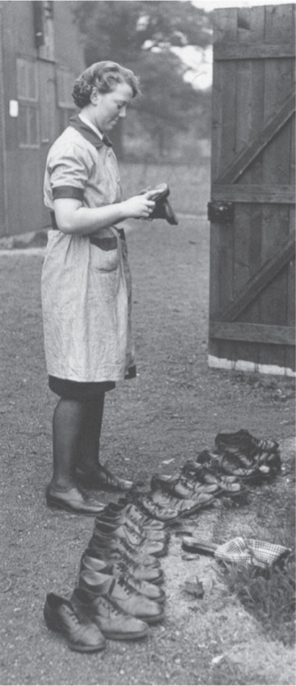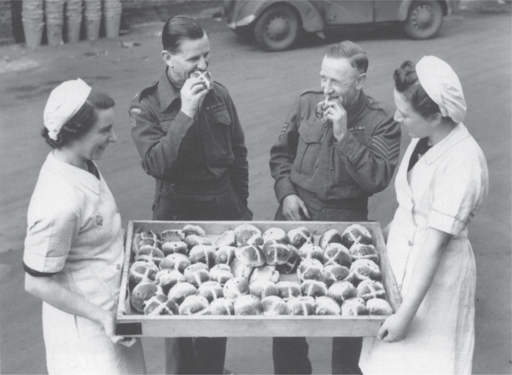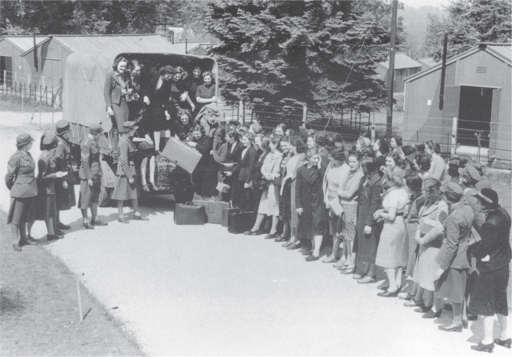Millions Like Us (72 page)
Authors: Virginia Nicholson
2. Spirit of the Blitz: a West End hairdressing salon picks up where it left off – in an air-raid shelter.

3. Cross-section of a life: the bombs exposed and revealed women’s interior-based existence as never before.

4. A cosy, if cramped, scene at Holborn station. No matter where, the 1940s mum always had something to knit. By the end of September 1940 over 170,000 Londoners were taking shelter in the city’s Underground stations.

5. As the threat to Britain intensified, every mother had to choose between her children’s safety and her maternal instincts.

6. Volunteers like Joan Wyndham (
above
, in uniform after she joined the WAAF in 1941)

7. Teenager Phyllis Noble, photographed at the time of Dunkirk, 1940.

8. Volunteers like Joan Wyndham helped trained nurses to staff the first aid posts established across the city.

9. For women, joining up often meant carrying out domestic tasks in a military context. This Wren steward has a typically unglamorous job.

10. A London Labour Exchange, 1941. After women’s conscription was introduced, recruitment figures increased more than tenfold.

11. The Navy, Army and Air Force Institutes, or NAAFI, which ran canteens and shops for the forces, was ‘a forgotten army’, largely staffed by women.

12. Dorothy (‘Doffy’) Brewer went for training with the ATS in autumn 1941. ‘If you survive it,’ she wrote, ‘nothing … that life can bring afterwards can be as bad.’

13. Barbara Cartland with her ATS hat on, plus lipstick.

14. Unsuspecting ATS recruits arriving at Aldershot in 1941.
